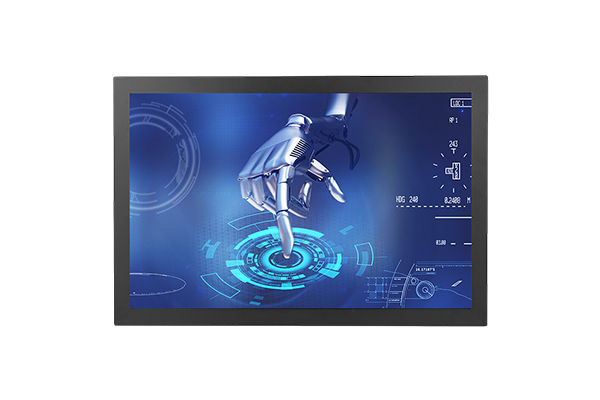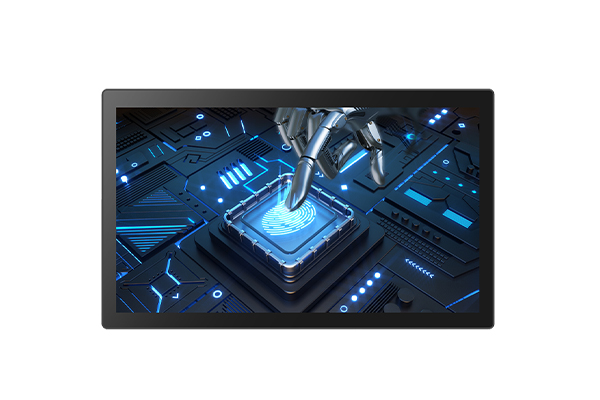How does the heat dissipation design of terminal all-in-one solve the problem of heat generation during long-term operation?
Release Time : 2025-06-11
It is common for terminal all-in-one to generate heat during long-term operation. Reasonable heat dissipation design is like building a "body temperature regulation system" for the machine. It requires comprehensive consideration from hardware layout, heat dissipation structure to material selection to ensure that the equipment maintains a stable operating state during continuous operation.
The scientific layout of hardware is the basis of heat dissipation design. Terminal all-in-one usually integrates a variety of electronic components such as motherboard, processor, hard disk, etc., which will generate heat during operation. In order to avoid concentrated accumulation of heat, designers will arrange them reasonably according to the heating characteristics of each component. For example, processors and power modules with high heat generation are placed near the heat dissipation port so that the heat can be dissipated more quickly; and components with low temperature sensitivity are placed in a relatively inner area. This layout is like planning a "heat evacuation channel" inside the machine, allowing heat to flow in an orderly manner, reducing the influence of heat conduction between each other, and creating favorable conditions for heat dissipation from the source.
The design of the heat dissipation structure directly affects the heat dissipation efficiency. Common heat dissipation structures use a combination of active heat dissipation and passive heat dissipation. Passive heat dissipation is usually achieved by the heat dissipation holes on the body shell. The location and number of these heat dissipation holes are carefully designed and are generally distributed in the top, bottom or side of the machine where air can easily flow. When air enters the machine from the heat dissipation holes, it will take away the heat generated by the components and then be discharged from the heat dissipation holes on the other side, forming a natural air convection. Active heat dissipation is mainly achieved by fans. The fans will be installed near the key heating components and accelerate the air flow by forced air supply, just like "fanning" the inside of the machine to take away the heat faster. The combination of active and passive heat dissipation methods is like equipping the machine with "double heat dissipation protection", which effectively improves the heat dissipation effect.
The selection of heat dissipation materials plays an important role in controlling heat conduction. In order to prevent the temperature of high-heat components from being excessively transferred to other components, materials such as thermal conductive silicone and thermal paste are used. Thermal conductive silicone has good thermal conductivity and can fit tightly between components such as processors and heat sinks, quickly transfer the heat generated by components to the heat sink, and then dissipate the heat into the air through the large surface area of the heat sink. Thermal paste can fill the tiny gaps between components and heat sinks, reduce air barriers, and enhance heat conduction efficiency. These materials act as "accelerators" for heat transfer, allowing heat to be quickly transferred from heating components to heat sinks to avoid local overheating.
The design of the body shell is also closely related to the heat dissipation effect. The shell of the terminal all-in-one should not only consider aesthetics and protection, but also take into account the heat dissipation function. Some devices use metal shells. Metal has good thermal conductivity and can quickly absorb the heat generated by internal components and dissipate it to the surrounding environment through the surface of the shell. At the same time, the shape design of the shell will also affect the air flow. For example, the shell is designed with uneven textures or guide grooves. These details can guide the air to flow more smoothly through the shell surface and speed up the heat dissipation. The shell is like the "heat dissipation skin" of the machine. While protecting the internal components, it also undertakes the important task of dissipating excess heat.
The temperature monitoring system is the "smart housekeeper" in the heat dissipation design. In order to grasp the temperature conditions inside the machine in real time, the terminal all-in-one will install temperature sensors at key locations. These sensors are like the "thermometer" of the machine, which can continuously monitor the temperature changes of each component. When the temperature exceeds the preset safety threshold, the sensor will transmit the signal to the control system, and the control system will automatically adjust the cooling strategy according to the situation, such as increasing the speed of the fan, enhancing the strength of active cooling, or starting the backup cooling device to ensure that the temperature drops back to the normal range as soon as possible. This intelligent monitoring and adjustment mechanism allows the cooling system to dynamically adjust according to actual needs, while ensuring the cooling effect, it can also reduce energy consumption.
Dust-proof design should not be ignored in the cooling process. For terminal all-in-one that runs for a long time, the cooling holes and fans are easy to absorb dust. Dust accumulation will block the cooling channel, affect air circulation, and thus reduce the cooling efficiency. Therefore, dust-proof measures will be added to the cooling design, such as installing dust-proof nets at the cooling holes. The dust-proof net can prevent dust from entering the machine without affecting the air circulation. For components such as fans, dust-proof designs will also be adopted, or they will be designed as detachable structures to facilitate regular dust cleaning. Doing a good job of dust prevention is like "clearing obstacles" for the cooling system, ensuring that the cooling channel is always unobstructed, so that the cooling effect is long-lasting and stable.
The heat dissipation design of terminal all-in-one is a systematic project that integrates hardware layout, structural design, material application and intelligent control. Through scientific planning of internal components, reasonable matching of heat dissipation methods, selection of suitable heat dissipation materials, optimization of shell design, and addition of intelligent monitoring and dust prevention measures, this "body temperature regulation system" can effectively deal with the heat problem generated by long-term operation, ensure stable operation of the equipment, and provide users with a continuous and reliable self-service experience.









